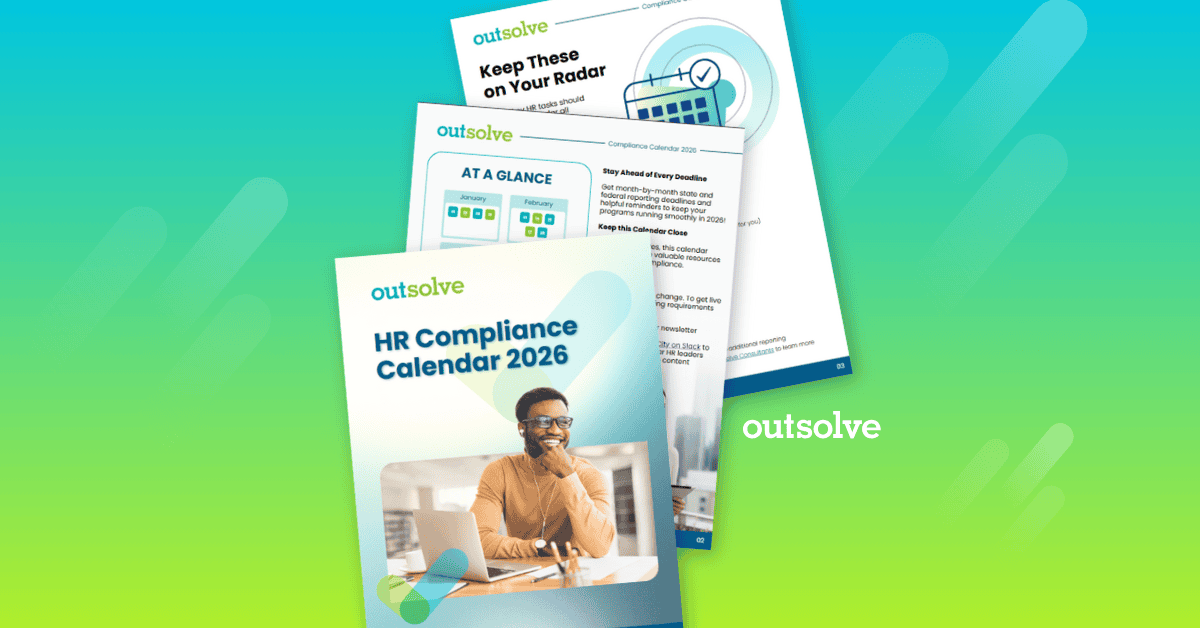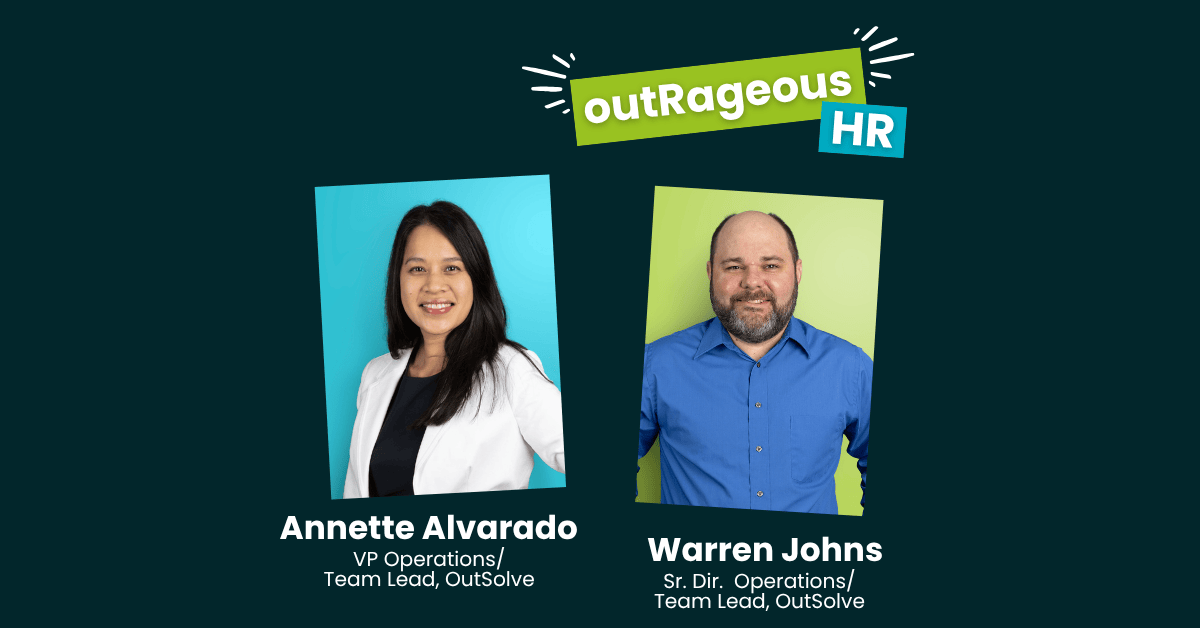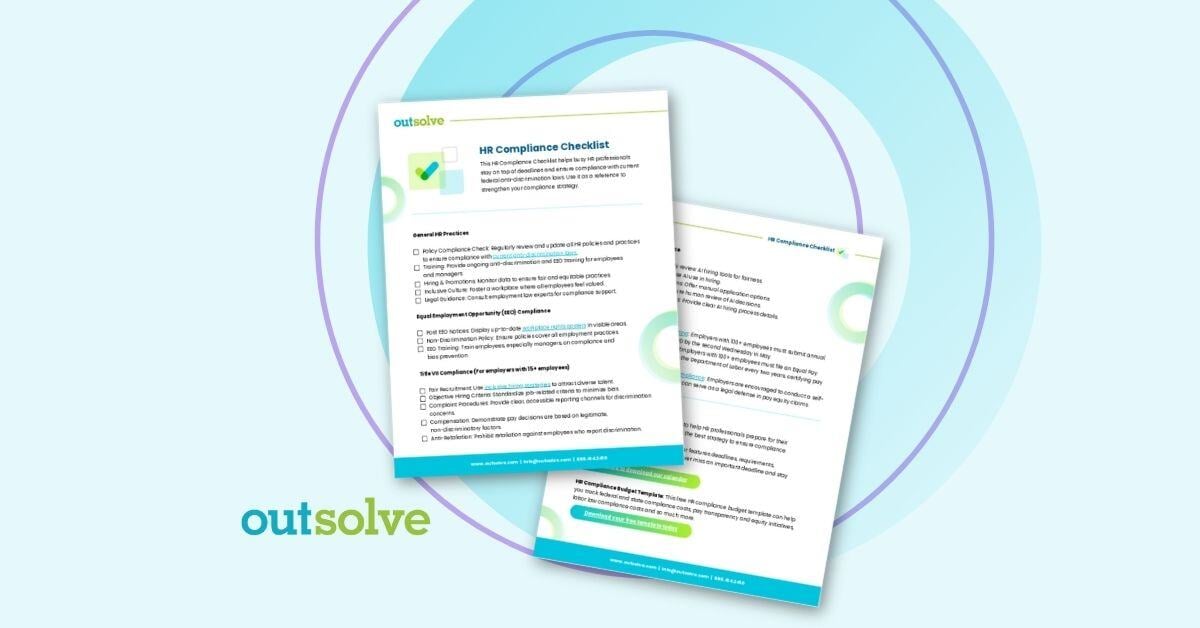4 min read
Legal Series: Part 2: From Risk to Readiness: How Employers Can Proactively Handle I-9 Compliance
![]() OutSolve
:
Aug 14, 2025 9:48:56 AM
OutSolve
:
Aug 14, 2025 9:48:56 AM

This article is part of an ongoing legal series designed to provide insight and practical guidance on current and emerging workplace compliance issues. These insights shared by lawyers are based on their interpretation of existing regulations and proposed changes, and intended for informational purposes, not to be regarded as legal advice.
Employers must verify that every employee they hire has the legal right to work in the U.S. based on U.S. immigration law. With the 2025 presidential administration change, the new Trump administration has declared enforcement of this requirement to be a priority and directed executive agencies to implement changes reflecting that prioritization.
As detailed in part one of this series, the bodies that create and enforce these rules often fall under the same executive department, the Department of Homeland Security. By understanding how agencies create and enforce rules, employers can prepare to respond to increased enforcement and potential changes to federal regulations.
Outsolve offers resources to help employers act proactively, before issues arise. We can help you comply with the law, stay in compliance, and be prepared if the government selects you for an audit or a workplace raid.
Ensuring I-9 Compliance
To achieve Form I-9 compliance or maintain compliance, employers should be proactive. Being proactive may include:
- Learning your obligations,
- Understanding employment verification systems,
- Taking time to understand I-9 enforcement processes and penalties in advance,
- Establishing and enforcing internal compliance policies,
- Completing internal I-9 audits at regular intervals, and
- Training key personnel on I-9 compliance and changes to any related rules.
Outsolve offers guidance to help you get and stay in compliance. OutSolve also offers a full-service I-9 compliance solution if your organization wishes to outsource employment verification.
Employer Obligations
To meet their legal obligations, employers must:
- Complete an I-9 for every new employee,
- Respond to results indicating someone may lack work authorization, and
- Retain I-9s for all employees for three years after they leave your organization.
If you rehire an employee whose I-9 you no longer have on file, you must complete a new Form I-9. If you rehire them within three years and still have their I-9 on file, you can complete Supplement B of the I-9, specifically designed for reverification or rehire, rather than filling in a brand new I-9.
Understanding How To Verify Employment Eligibility
To verify employment eligibility, employers may use the federal E-Verify system, which compares information in an employee’s Form I-9 to records available to the U.S. Department of Homeland Security (DHS) and Social Security Administration (SSA).
You can perform an E-Verify search to identify employers enrolled in the system. While participation is generally optional, some employers must use E-Verify. Who is required to use E-Verify? Some employers may be required to do so by contract, particularly federal contractors, or state law. Certain states require mandatory use of E-Verify.
I-9 Enforcement
Under an amendment to the Immigration and Nationality Act (INA) passed in 1986, employers must verify that everyone they hire to work in the U.S. has immigration status that grants them the right to work. If they don’t, the government can impose penalties, including civil fines and potential criminal prosecution in cases involving deliberate violations.
Executive agencies usually initiate audits to determine whether an employer is in compliance. When an agency has enough evidence suggesting the employer has significantly violated Form I-9 requirements, such as hiring multiple unauthorized workers, it may request a judicial warrant and conduct a workplace raid.
Internal Policies
Consider creating internal policies to address the possibility of being selected for an audit or targeted by a workplace raid. While you will likely want to tailor policies to your industry and workplace, you may want to address what process to follow if you receive a Notice of Inspection (NOI) initiating an audit, including:
- Who will collect the required documents,
- Where to find the documents,
- How to ensure you provide every requested document, and
- What you will communicate to employees about the audit process and results.
To address the risk of workplace raids, create a policy addressing:
- Who has the authority to admit ICE,
- What employees should do if ICE shows up, and
- What supervisors should do if ICE arrives.
Ensure you clearly communicate your policies to employees, supervisors, and human resources managers so that they know what to do.
Internal Audits
Employers can perform internal I-9 audits to identify compliance issues before the government gets involved. To do so, verify you have completed and retained all necessary I-9s and check those documents for errors or omissions. If you find one or more errors in an internal audit, you can officially correct them.
I-9 and Immigration Enforcement Training
Along with creating and communicating internal policies, consider offering I-9 compliance training, immigration enforcement training, or both. Training can help you and your employees know what to expect and give them an opportunity to ask clarifying questions. If you have noncitizens on staff, take special care to listen to and attempt to address any of their concerns.
Staying on Top of Rule Changes
Because Congress has failed to make substantial changes to the INA in three decades, most changes to I-9 rules and processes occur in the executive branch through:
- The agency rulemaking process in the Code of Federal Regulations,
- Executive orders, and
- Policy declarations from other executive officials.
Significant changes may face challenges and, potentially, be halted before they begin. Ensure you follow the current law, not proposed changes or policy preferences.
Tracking Priorities
Knowing what to expect makes preparation that much easier. In its first term, the Trump administration increased the number of enforcement actions exponentially. It doubled the average number of audits and resumed raids after ten years without them. It also targeted specific industries that frequently employ noncitizens, including:
- Agriculture,
- Construction,
- Manufacturing, and
- Food processing.
In 2025, the administration has already targeted similar industries and sparked serious controversies, engaging in a so-far unpredictable display of priorities.
Political Targeting
In June 2025, protests erupted in Los Angeles following ICE raids at a Home Depot and a garment factory. The administration responded with force, ordering the National Guard and Marines to enter California to quell the protests despite objections from California Governor Gavin Newsom.
As of July 10, 2025, protests and raids throughout the state remain ongoing. In response to the protests, the administration vowed to increase enforcement in states that consistently vote for Democratic candidates, like California. It appears to be following through, specifically targeting employers in California.
Paused, Then Resumed Raids
On June 11, 2025, the administration paused certain raids due to the overtly negative impact they have already had on industries, including:
- Agriculture,
- Meat-packing plants,
- Restaurants, and
- Hotels.
The administration indicated it was backing off due to complaints from businesses and industries over the negative impact of its actions. While this declaration brought some relief, the administration reversed course and restarted those raids in less than a week.
Preparation Is Key
Ultimately, the current administration has created an unpredictable environment, leaving many employers on edge. While Outsolve cannot control the unstable political environment, we can help you prepare so you’re ready if you find yourself targeted for an audit or raid.
Learn more about our Form I-9 Employment Verification Solution and how we can help today.
Founded in 1998, OutSolve has evolved into a premier compliance-driven HR advisory firm, leveraging deep expertise to simplify complex regulatory landscapes for businesses of all sizes. With a comprehensive suite of solutions encompassing HR compliance, workforce analytics, and risk mitigation consulting, OutSolve empowers organizations to navigate the intricate world of employment regulations with confidence.
Weekly OutLook
Featured Posts

New Year, New Deadlines: 2026 HR Compliance Calendar

outRageous HR: Plan Now or Pay Later
Related Posts

What Employers Need to Know About the Delaware Pay Transparency Law
Here's What You'll Learn

What is an Immigration Enforcement Raid?
Here's What You'll Learn

Refreshing Your I-9 Tools and Process to Stay Compliant
Form I-9 is a federal requirement that carries real consequences if handled improperly. With increased scrutiny on immigration by the current...

